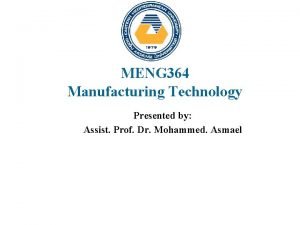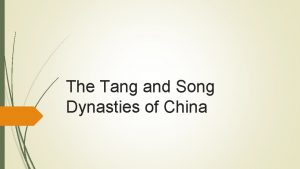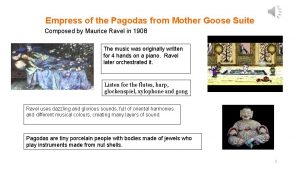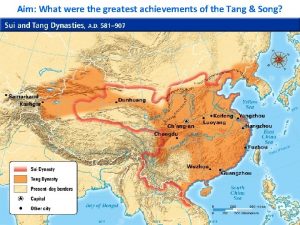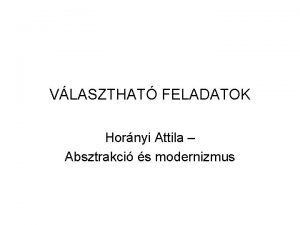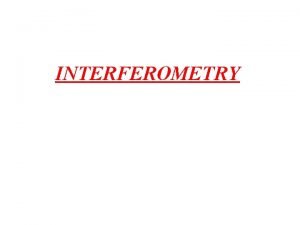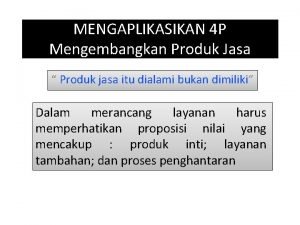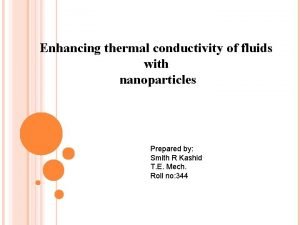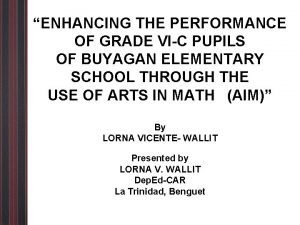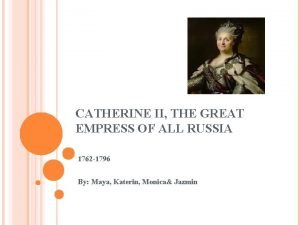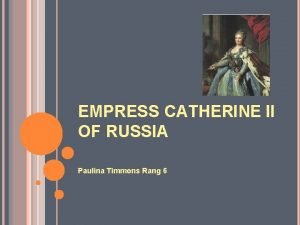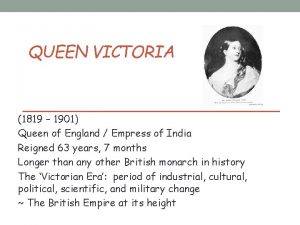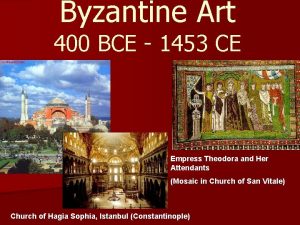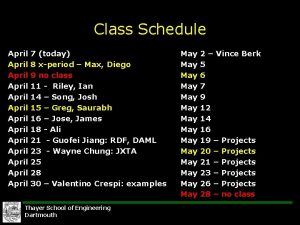EMPRESS Workshop NPL April 18 2018 Enhancing process


















- Slides: 18

EMPRESS Workshop NPL, April 18, 2018 Enhancing process efficiency through improved temperature measurement WP 1, Overview “Low-drift contact temperature sensors to above 2000 °C” frank. edler@ptb. de PTB, WG: “Thermoelectrics”

WP 1: Low-drift contact temperature sensors to above 2000 °C Partners: PTB 1, JV 1, NPL 1, Elkem 2, MUT 2, STRATH 2, CCPI 3 1 Internal funded partner (National Metrology Institutes (NMI)) 2 External funded partner (Industry, University) 3 Unfunded partner PTB JV NPL Elkem MUT STRATH CCPI Physikalisch-Technische Bundesanstalt, Germany Justervesenet, Norway National Physical Laboratory, United Kingdom Elkem AS Technology, Norway MUT Advanced Heating Gmb. H, Germany University of Strathclyde, United Kingdom CCPI Europe, United Kingdom EMPRESS Workshop at NPL 2018 Seite 2

WP 1 Aim: Development of novel low-drift temperature sensors for enhanced production and temperature control Objective: Development of novel sensors that have in-process traceable uncertainty of better than 3 °C at 1450 C and better than 5 °C at T > 2000 °C. 3+1 Tasks: 1. 1 – 1. 4 Testing under industrial conditions 3 new or optimized sensors • Task 1. 1: Optimized Pt. Rh alloyed thermocouples • Task 1. 2: Sapphire tube thermometer • Task 1. 3: Graphite based thermocouples EMPRESS Workshop at NPL 2018 Seite 3

Task 1. 1 Background Conventional Pt/Rh thermocouples types S, R, B → thermoelectric instability (vapour pressure of Pt- and Rh-oxides) → historical „accidents“ rather than established on basis of optimization → modelling Pt-/Rh-oxide transport + experimental determination of optimum compositions Model based on Pt, Rh oxide vapour transport (developed by NPL) Pt, Rh oxide transport model: calculated wire composition for which evaporation of the oxides yields no change in wire composition (i. e. most stable) Experimental investigation at NPL and PTB EMPRESS Workshop at NPL 2018 Seite 4

Task 1. 1 • • Annealing of multi-wire thermocouples with different Ptx%Rh-alloys: x = 5, 8, 10, 13, 17, 20, 25, 30, 40 at different temperatures between about 1315 °C and 1480 °C (6000 hours) Repeated measurements at Co-C (1324 °C) / Pd-C (1492 °C) 13 40 Annealing Temperature 1315 °C 1350 °C 1400 °C 30 1450 °C 10 25 17 20 Drift rates at Co-C (1324 °C) EMPRESS Workshop at NPL 2018 Seite 5

Task 1. 1 Determination of a draft reference function of Pt 40 Rh/Pt 6%Rh Calibration points 1000 ºC to 1500 °C by comparison, Ice point, Ga, In, Sn, Zn, Al, Ag, Cu, Co-C KRISS Ice point, Zn, Al, Ag-Cu, Ag, Cu, Fe. C, Ni-C, Co-C, Si-Si. C, Pd-C, Ni, Pd CEM Protocol Thermocouple constructed according to the procedure of the participating laboratory. NPL • Electrical anneal of the wires at 1300 °C for 4 h • Assemble the wires in a twin-bore sheath • Annealing of the TC at 1350 °C for 200 h • emf measurements at the freezing point of Cu (thermoelectric stability) • Calibration in the temperature range 0 °C to 1800 °C • Homogeneity check PTB 0 to 700 °C by comparison, Ice point, Ga, In, Sn, Zn, Al, Ag, Cu, Co-C, Pd. C, Pt Ice point, Ga, In, Zn, Al, Ag, Cu, Ni-C, Co-C, Pd, Rh-C, Pt NPL, PTB, CEM, KRISS EMPRESS Workshop at NPL 2018 Seite 6

Task 1. 1 Calibration values by the participants Deviations from 6 th order polynomial EMPRESS Workshop at NPL 2018 Seite 7

Task 1. 1 (1. 4) Test under industrial conditions at AFRC and MUT (Advance Heating Systems) EMPRESS 40 -6 calibrations 17000 15000 13000 furnace run 09. 01. 2018 , 1600 °C 11000 9000 5000 3000 1000 500 1000 temperature / °C • • • 1500 9 days stable temperature indications offset: ≈ +25 °C 2000 1608 12. 76 1607 1606 1605 12. 75 1604 1603 1602. 5 °C 12. 74 emf, Pt/Rh 40/6 [m. V] 7000 -1000 0 12. 77 1609 temperature, type B [°C] emf / µV 1610 1601 1600 12. 73 1520 1530 1540 1550 1560 1570 1580 1590 1600 1610 1620 1630 1640 1650 1660 time [min] EMPRESS Workshop at NPL 2018 Seite 8

Task 1. 2 Development of a sapphire tube thermometer • • • A prototype thermometer was developed based on thermal radiation. It consists of a sensing element (blackbody), which is placed inside a sapphire tube with suitable optics channeling thermal radiation on to a light detector (electronics) Based on the Planck radiation law, a model for the signal as a function of temperature was developed. Tungsten filament EMPRESS Workshop at NPL 2018 Seite 9

Task 1. 2 Main problem: the temperature profile along the tube disturbs the signal Scattering of signals Misalignment Sodium heatpipe Temperature differences between a thermocouple and a sapphire tube setup, using two detectors working at different wavelengths and their ratio EMPRESS Workshop at NPL 2018 Calibration curves from Sakuma-Hattori fits: before and after the trial at ELKEM Seite 10

Task 1. 2 (1. 4) Test under industrial conditions at ELKEM Furnace: Si solidification facility - Temperature cycles every 24 h: room temperature, pre-heating at 1420 °C, 1600 °C, cooling procedure. - Combined uncertainty at ELKEM: 9. 2 K appearance of the sapphire tube after the measurements SEM picture different immersion profiles (compared with a TC) EMPRESS Workshop at NPL 2018 Problem with emissivity Dual-band measurements Seite 11

Task 1. 3 Development of carbon thermocouples Materials: Special requirements of the construction due to the use of non-metal thermoelement: Sigrabond® Sigrafine® R 7510 G Pt 100 Sigrafine® R 7660 P 010 Tubes 12 x 8 mm L: 600 mm Rods 4 mm L: 600 mm Sigradur® (Glassy carbon) Flange Tube rod Rods: 4 mm, L: 600 mm tube Head design MUT EMPRESS Workshop at NPL 2018 Seite 12

Task 1. 3 emf/temperature relationship (room temperature) Thermocouple: C/C 76/75 -N 01 1500 °C 1950 °C R 7660/R 7510 not suitable above 1500 °C EMPRESS Workshop at NPL 2018 Seite 13

Task 1. 3 Sigradur®/R 7660 • • moderate thermoelectric stability up to 1500 °C (combinations of Sigradur®, within 3 K, 55 h, cycling room temperature ↔ 1500 °C) irreversible changes at higher temperatures (above 1600 °C: increasing emfs) prone to EMI (no insulation) • lack of thermoelectric stability and sufficient reproducibility • EMPRESS Workshop at NPL 2018 Seite 14

Task 1. 3 Stop irreversible drift? Drift reversal at 1900 °C 1700 °C 1820 °C EMPRESS Workshop at NPL 2018 Seite 15

Task 1. 3 (1. 4) Test under industrial conditions at MUT 17. 0 74 EMF / m. V 16. 8 70 16. 6 66 62 16. 4 58 16. 2 Temperature (Head) / °C 78 54 16. 0 2 7 12 time / h 17 50 Sigradur®/R 7660: 1500 °C, 100 h (15. 93 ± 0. 03) m. V 1600 °C, 10 h (16. 50 ± 0. 03) m. V EMPRESS Workshop at NPL 2018 Seite 16

WP 1 Summary Task 1. 1: Model of emf drift rate related to d. S/dc developed Most stable combination of Pt. Rh alloys identified (experimentally) Preliminary reference function of Pt 40%Rh/Pt 6%Rh (6 th order, full temperature range, 0 °C – 1800 °C) Task 1. 2: Model function temperature to signal developed (Sakuma-Hattori equation) Three different tube design tested Prototype calibrated (JV) and tested at ELKEM (1600 °C) Drift effects dual-band detection (less influence of emissivity) Theoretical evaluation of dual-band detection + practical tests (JV + ELKEM) Task 1. 3: Suitable thermocouple design developed (head) Four different graphite materials tested Insufficient thermoelectric stability at 2000 °C Combinations with glassy carbon most promising (T < 1700 °C) Task 1. 4: Performed with satisfying results in reduced temperature ranges EMPRESS Workshop at NPL 2018 Seite 17

Questions? Physikalisch-Technische Bundesanstalt Braunschweig and Berlin Abbestraße 2 -12 10587 Berlin Frank Edler E-Mail: frank. edler@ptb. de www. ptb. de Stand: 04/18
 Property enhancing processes
Property enhancing processes Empress wu accomplishments
Empress wu accomplishments Empress wu accomplishments
Empress wu accomplishments Empress of the pagodas
Empress of the pagodas Scholar-gentry definition
Scholar-gentry definition Song dynasty social structure
Song dynasty social structure Frank stella empress of india
Frank stella empress of india Npl gauge interferometer
Npl gauge interferometer Npl certificate in educational leadership
Npl certificate in educational leadership Npl directive
Npl directive Npl netball
Npl netball B a f c j e
B a f c j e Four enhancing qualitative characteristics
Four enhancing qualitative characteristics Enhancing professional practice
Enhancing professional practice Danielson framework components
Danielson framework components Enhancing personal effectiveness
Enhancing personal effectiveness Contoh pengembangan produk jasa
Contoh pengembangan produk jasa Enhancing thermal conductivity of fluids with nanoparticles
Enhancing thermal conductivity of fluids with nanoparticles Enhancing the performance of grade vi-c
Enhancing the performance of grade vi-c
